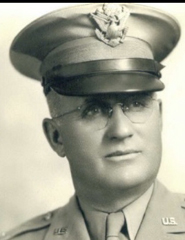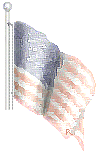Gets Information on Bombings Directly From Germans
By Frank Miles
Air Power Press Camp in Germany (IDPA) -- Pfc. Frank Crandall, Jr. Oelwein,, was one of the 42nd Rainbow division doughboys who captured Wurzburg and Schweinfurt in sharp fighting. The tall, 21-year -old former farm hand was on guard duty at a gate at one of the three air bomb-blasted Kugelfabrik Fisher ball bearing plants in Schweinfurt when I met him.
"Keeping curious civilians out ," he replied to my inquiry as to what he was doing.
"Does that include war correspondents from Iowa," I asked.
"Sure doesn't," he grinned. You look enough like a soldier to get by."
The plants once produced more than 50 percent of all ball bearing use by the German war machine. The rest came from Sweden and Italy. American and British bombing planes literally had torn them to pieces with some of the most accurate targeting of the war leaving twisted steel, splintered timbers, crushed cement, stone and bricks.
Knockout Bombings
American attacked eight times the British twice starting Aug 17, 1943. Doggedly the Germans resisted with fighter aircraft and flak. After each raid they tried feverishly to reconstruct shattered structure and machinery. On the first American mission going, over and returning from Schweinfurt, 36 ships were lost, on the second 60. To finally knock the plants out Americans dropped more than 6,500 tons of bombs and 181 planes of which 54 were of the RAF were shot down. It was one of the most important jobs in which the 8th American air force ever was engaged and one of most costly considering the number of ships used.
Martin Wies, bewhiskered, elderly but vigorous and knickered superintendent of one plant, freely answered questions from air force officers and correspondents on a tour through the rubble.
We found him with a group of German men and women who had worked in the plant.
While we were gone a middle aged veteran of the last war, who was about half drunk, started to get tough with a young Georgia jeep driver watching our vehicles. The GI drawled a suggestion to some of the fellow's friends that had better calm him down. They did.
61 Hours -- $17
Wies informed that most of the laborers worked 61 hours a week minimum for what would net about $17 in American money. From other sources we learned living costs were high but any protest brought harsh penalties. No one dared quit and a strike would have drawn death from a firing squad.
Some of the bombs aimed at the plant had hit buildings in the city. Artillery shells hurled to dislodge defending nazi troops had wrecked many. Machine gun and rifle bullets fired by our advancing infantrymen had made countless scars in standing walls.
If you can imagine a city the size of Waterloo almost wholly in tangled ruins you will have an idea of the sight, then include in your visualization bodies of soldiers and a few citizens.
Praises Americans
Karl Wilhelm Peterson, about 65, mustached and well-dressed, the Swedish representative of SKAF in Schweinfurt, expressed great admiration of American precision bombing. He declared our bombs landed where they were intended with uncanny accuracy. To be in an area in which bombs were exploding, he asserted was an experience too horrifying as to be indescribable. The Germans, he believed, if unhampered could rebuild their plants to former capacity in year.
Near the plants thousands of the former laborer of both sexes between 15 and 50 years year of age were under guard of American soldiers. At one side 137 men in civilian garb under special vigil whom army intelligence had discovered were deserters from the nazi army.
Driving toward the front, one may meet thousands of Germans with belongings in carts and on backs returning to homes they left when American troops approached from the west.
Source: Mount Pleasant News, May 9, 1945
![]()

